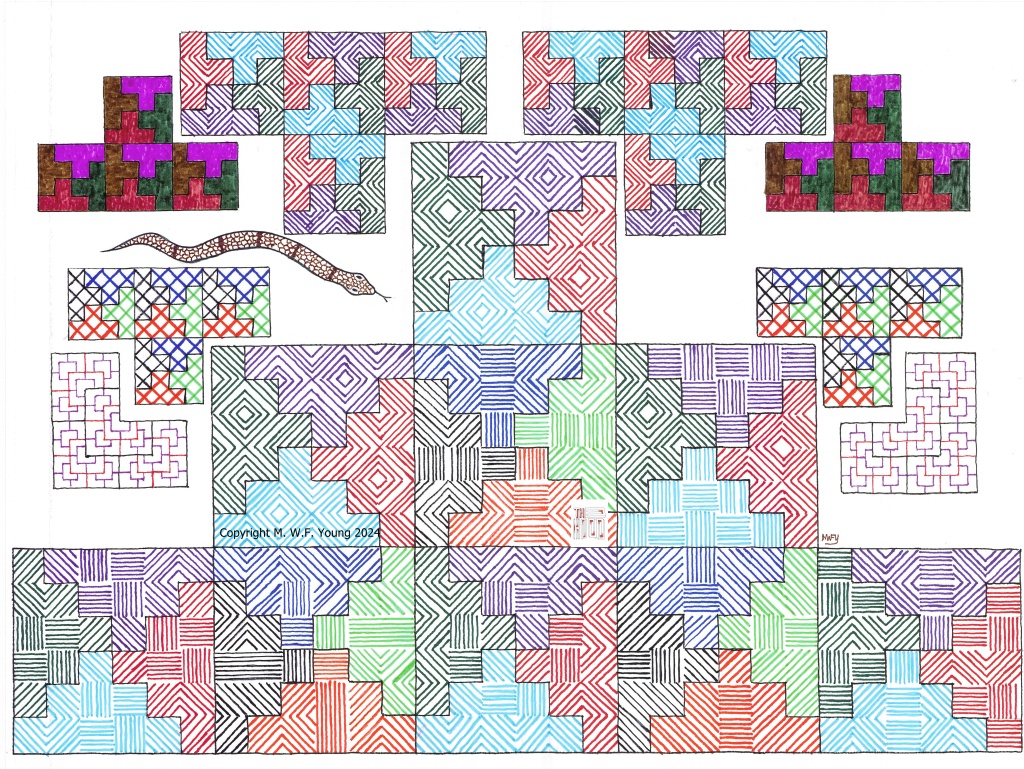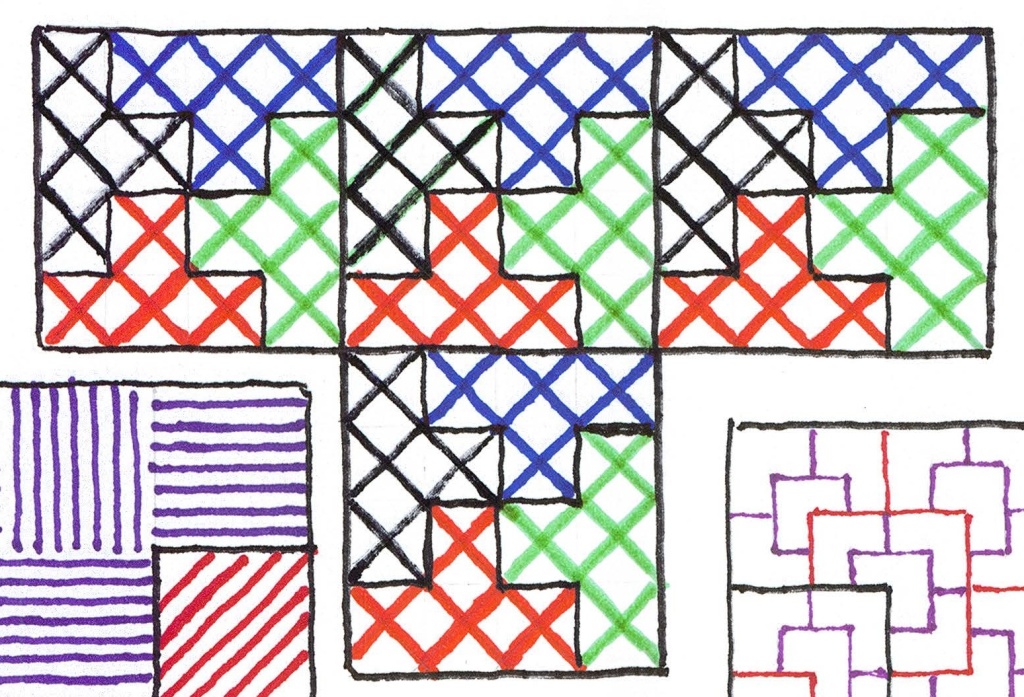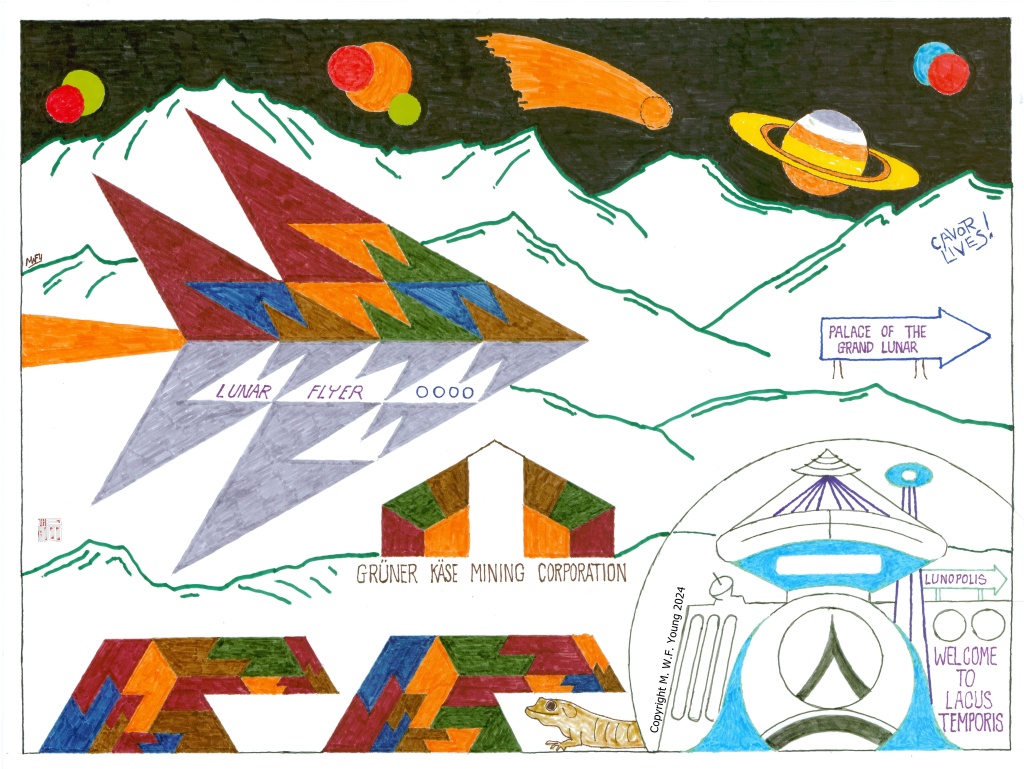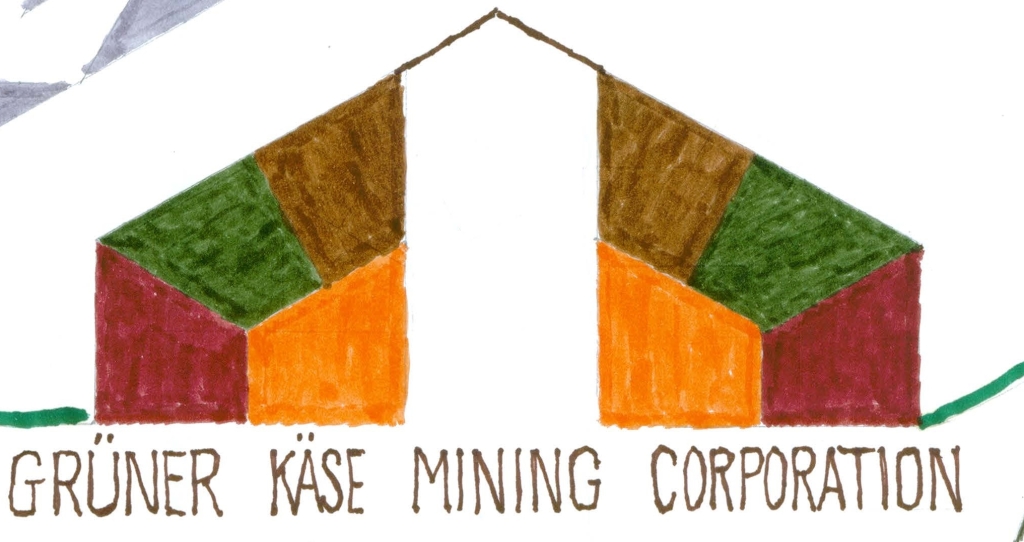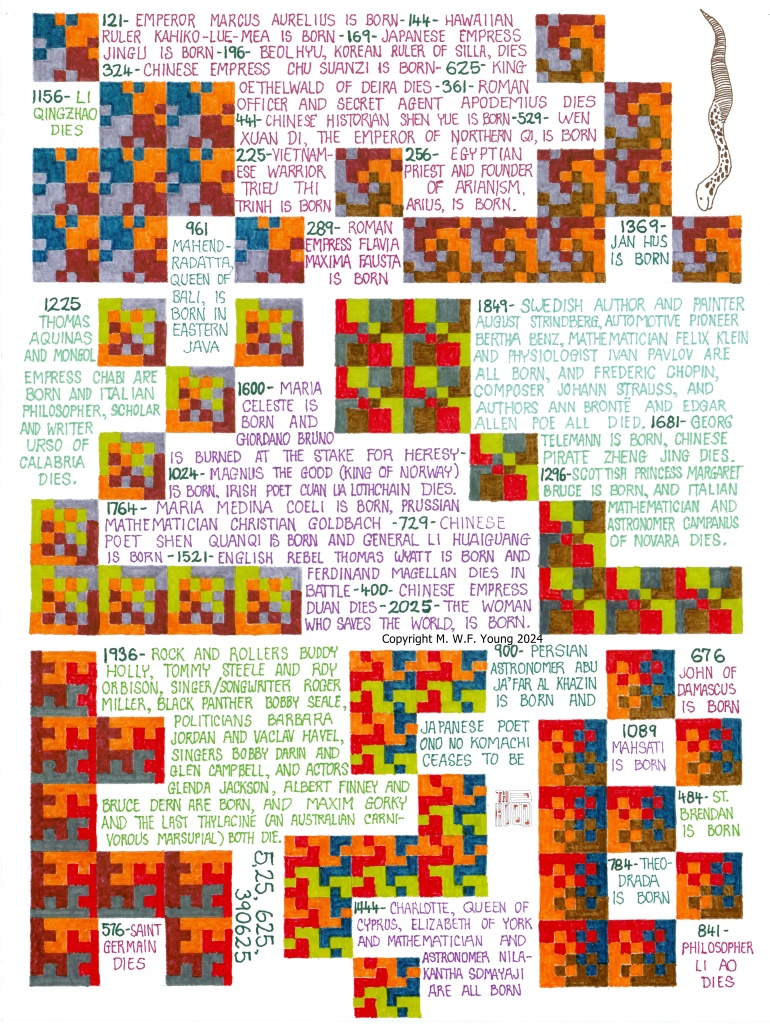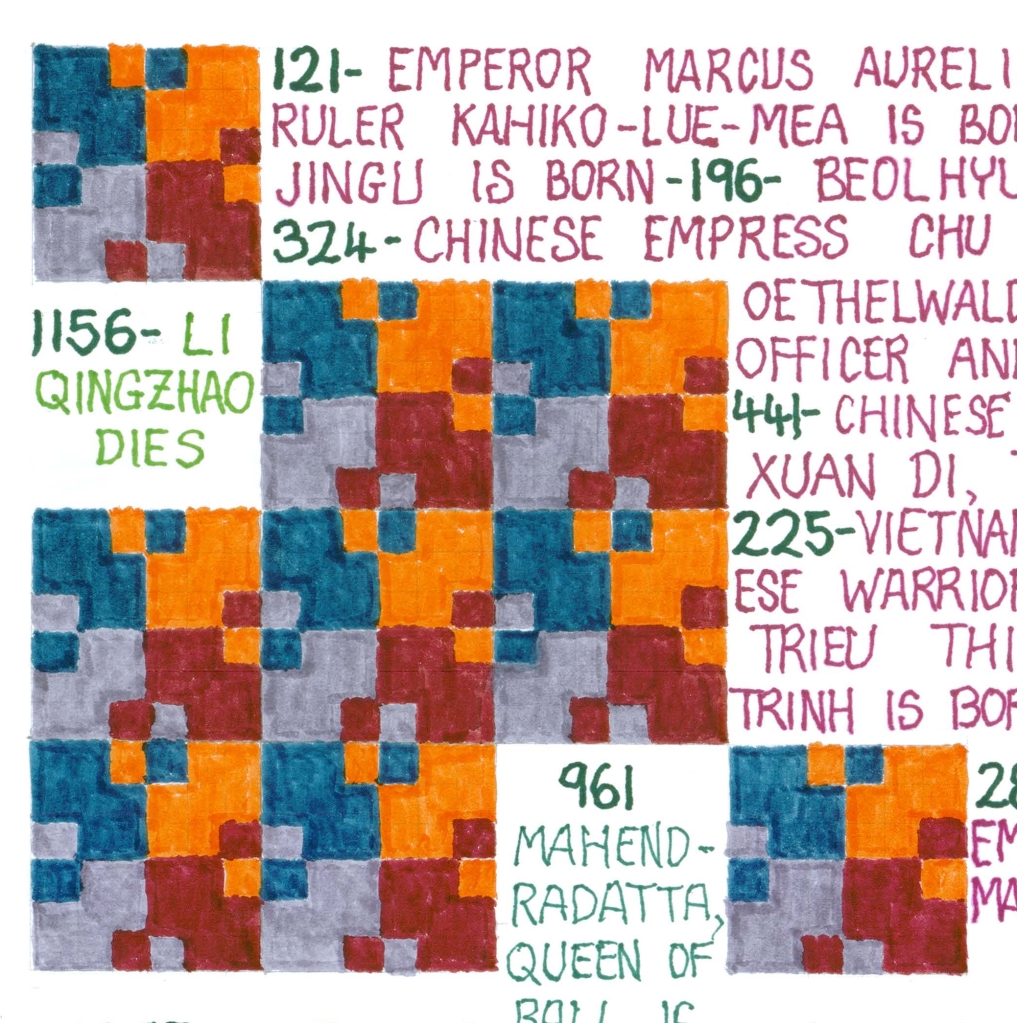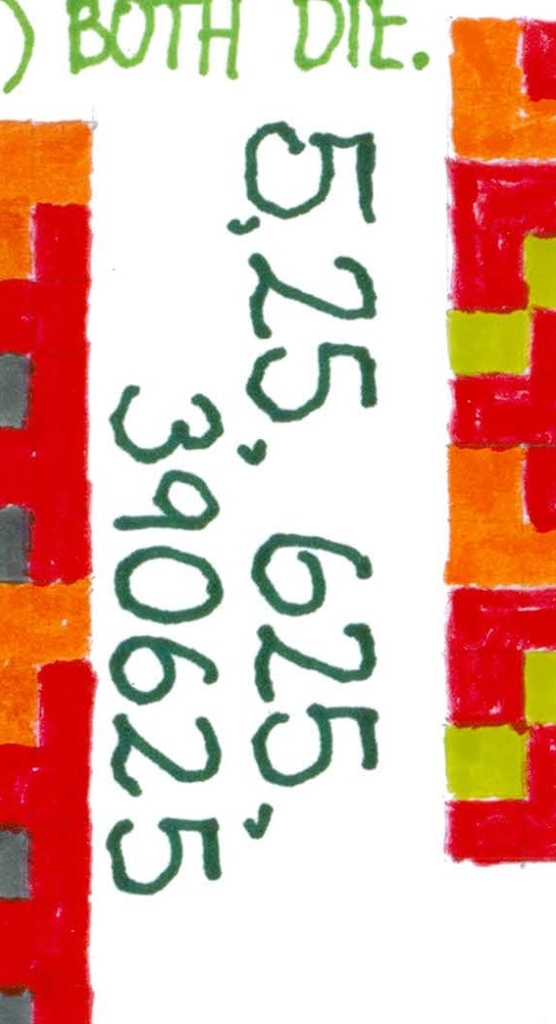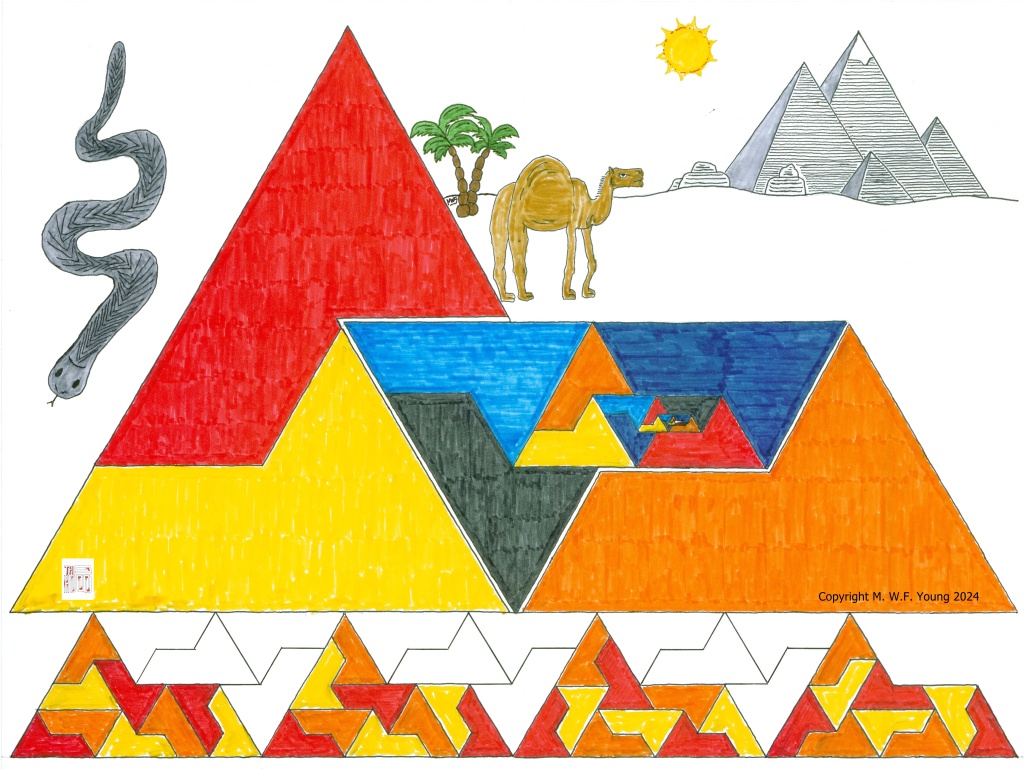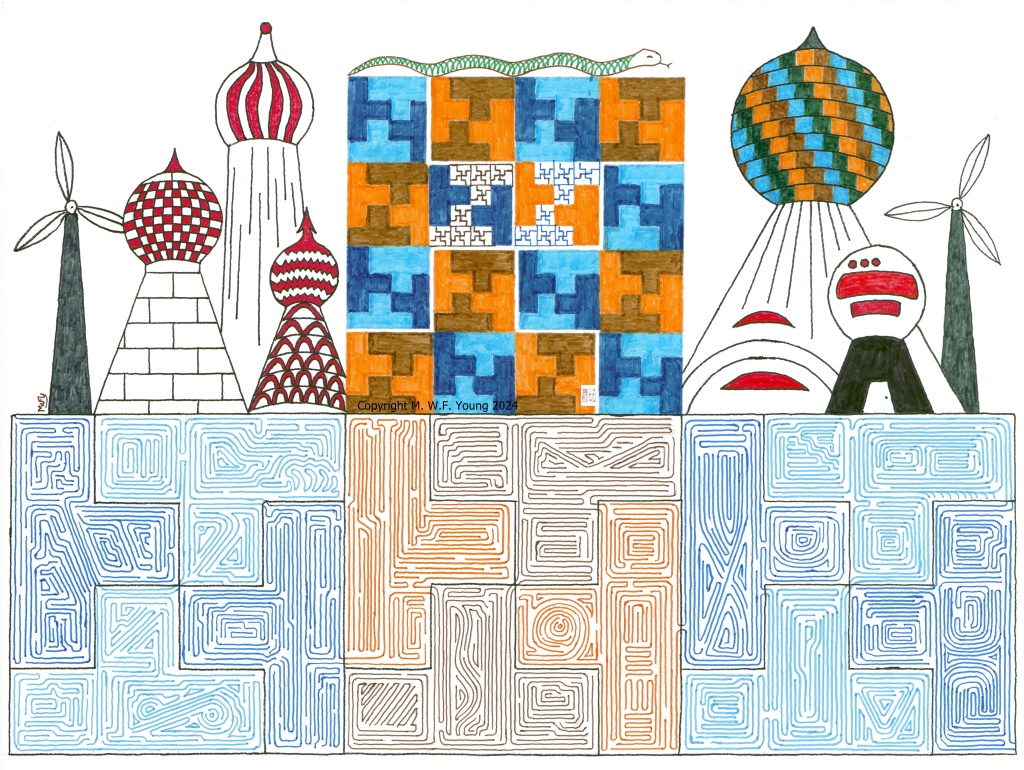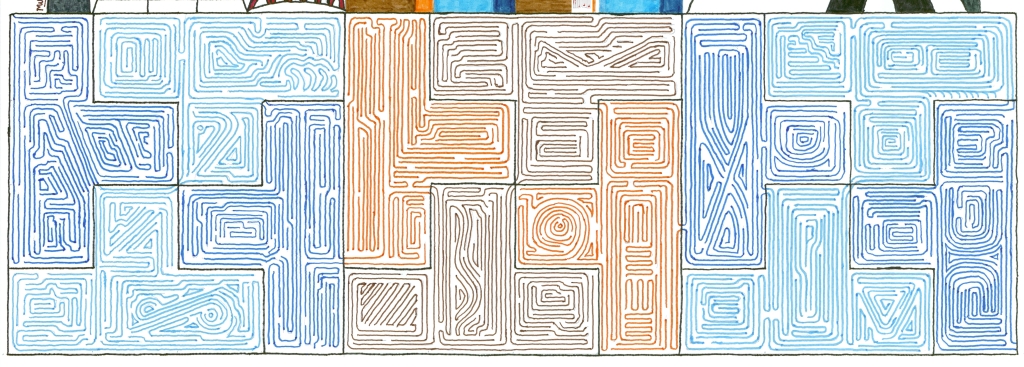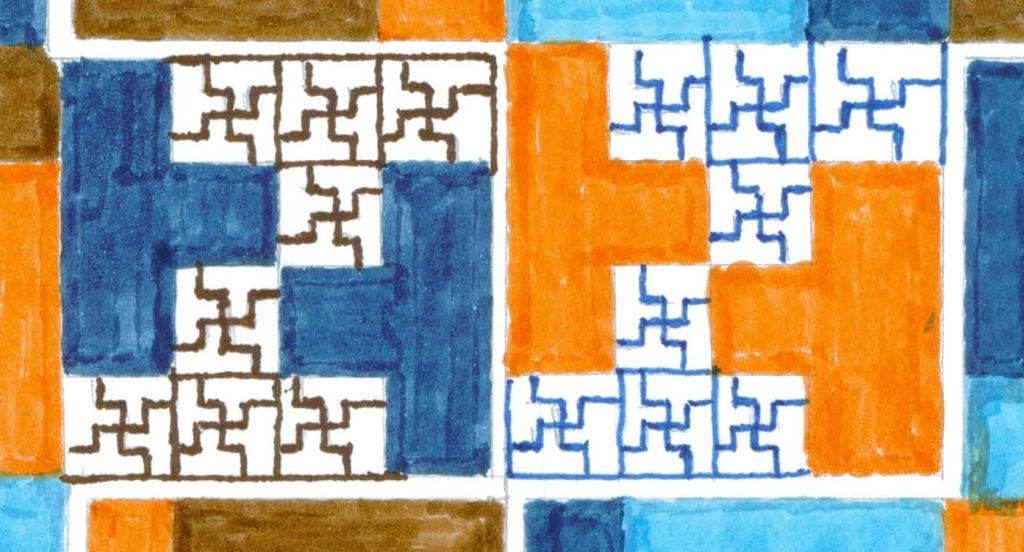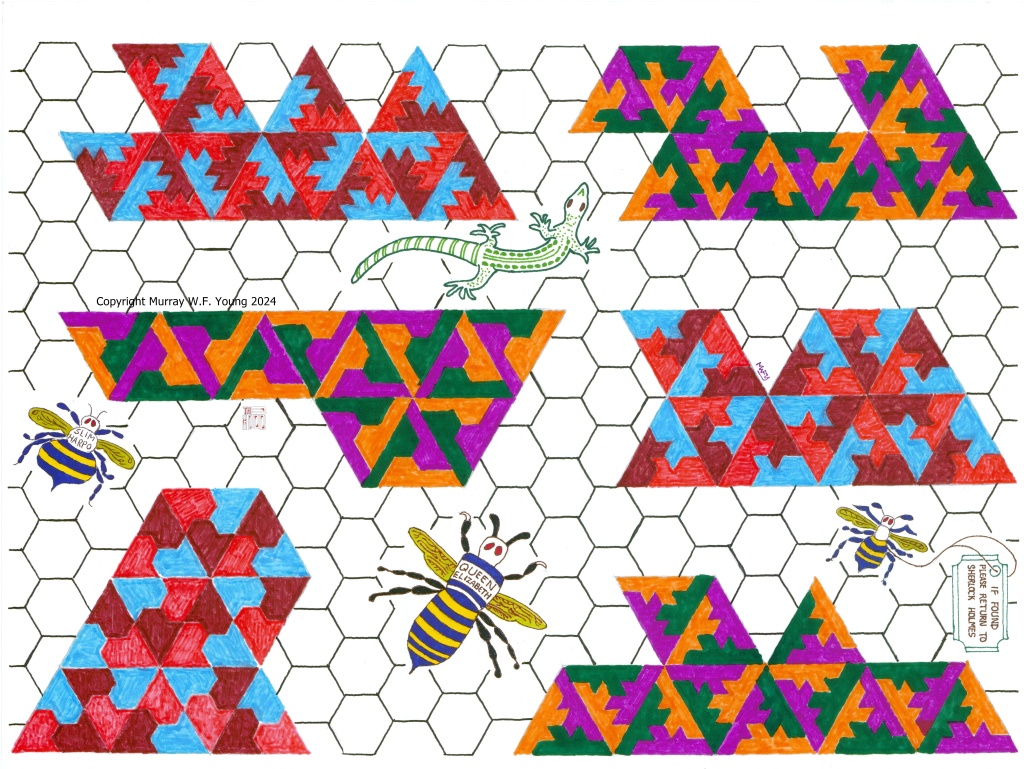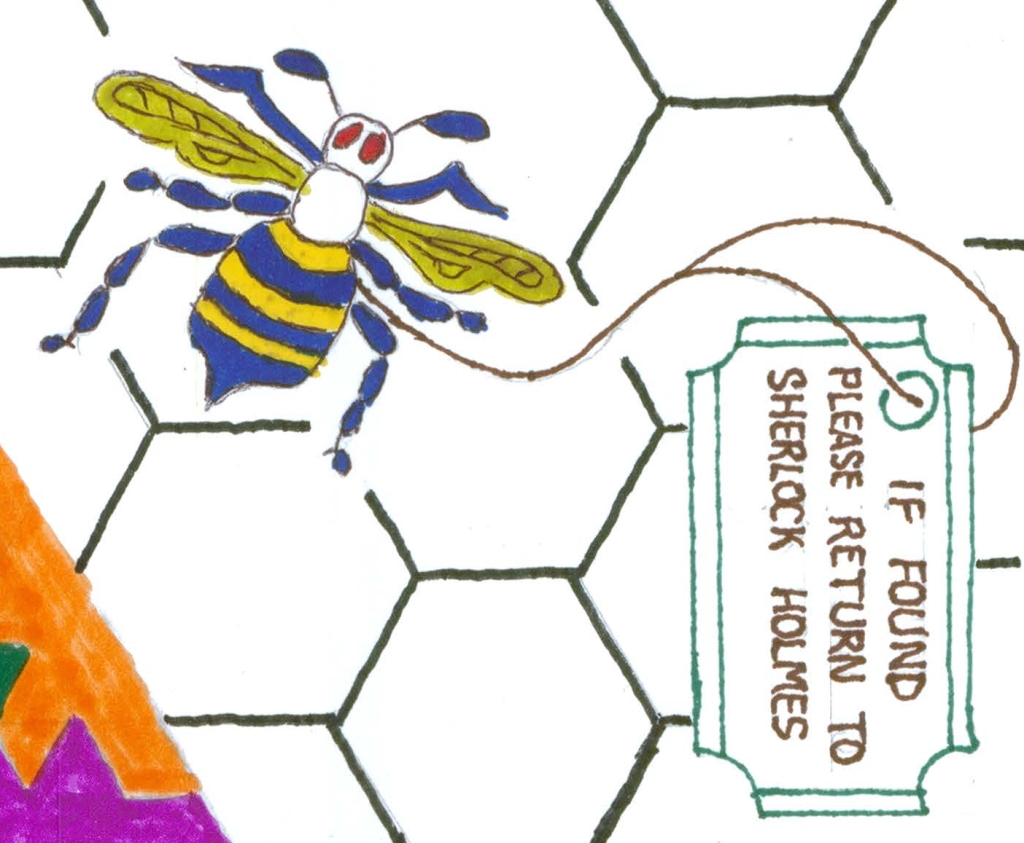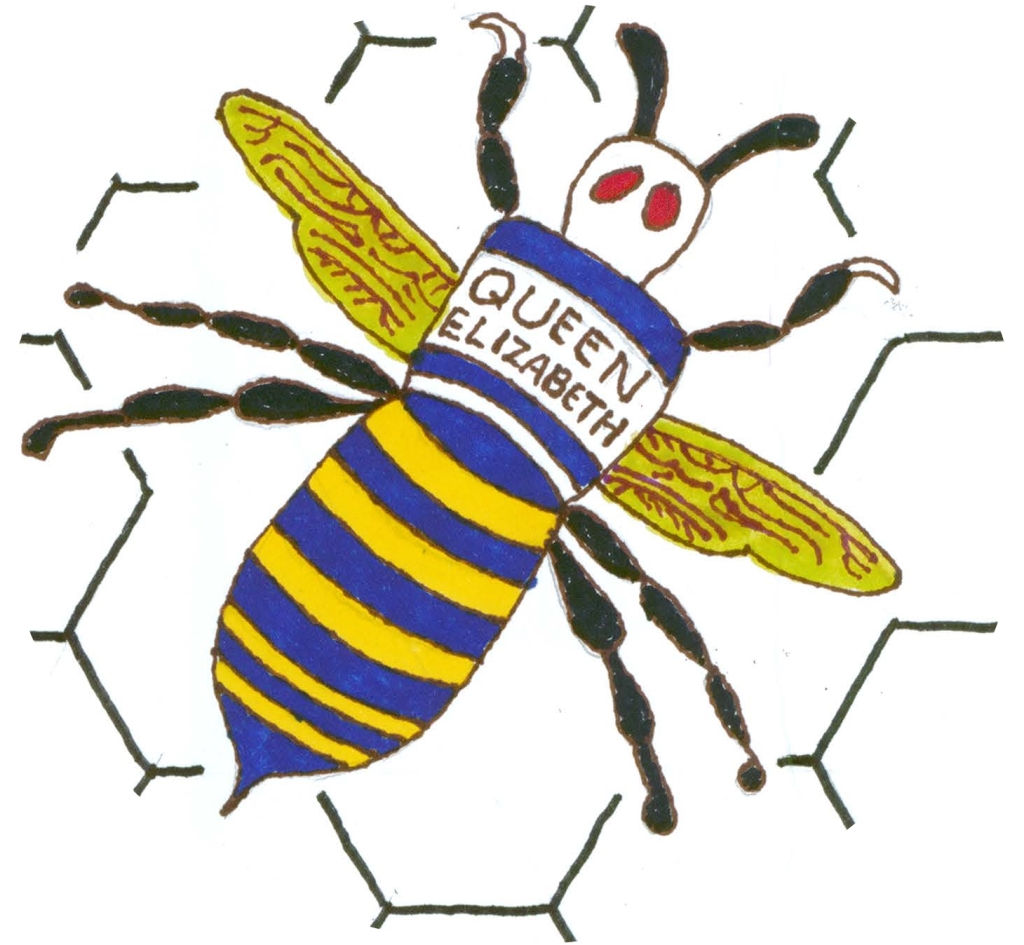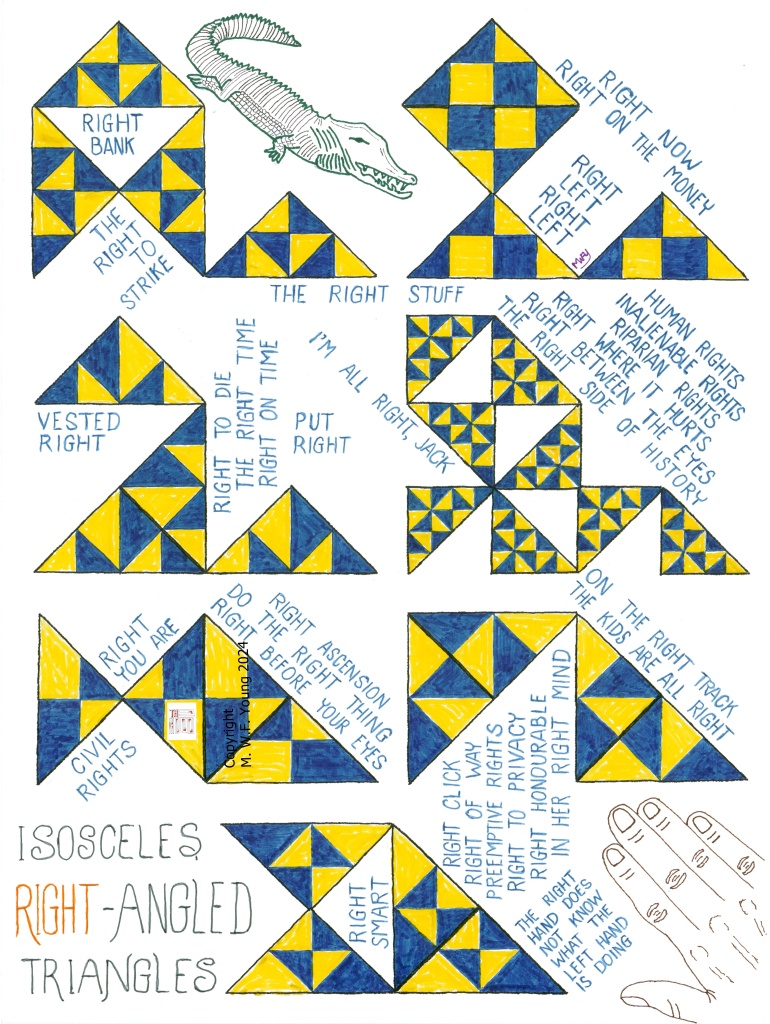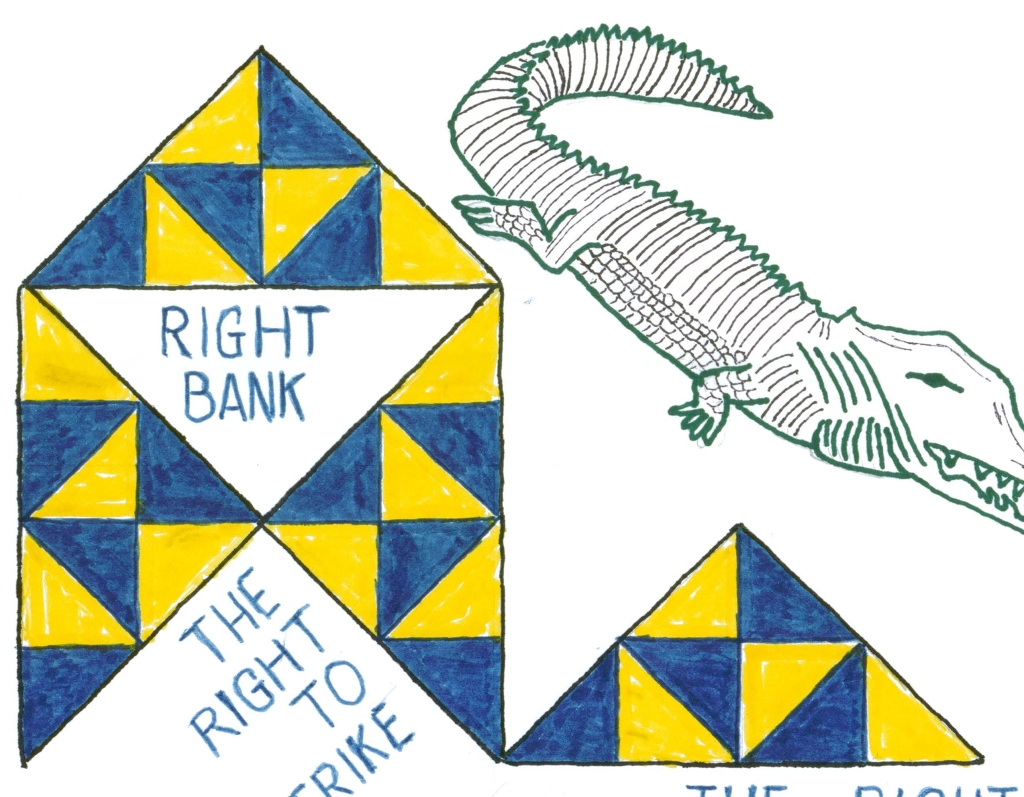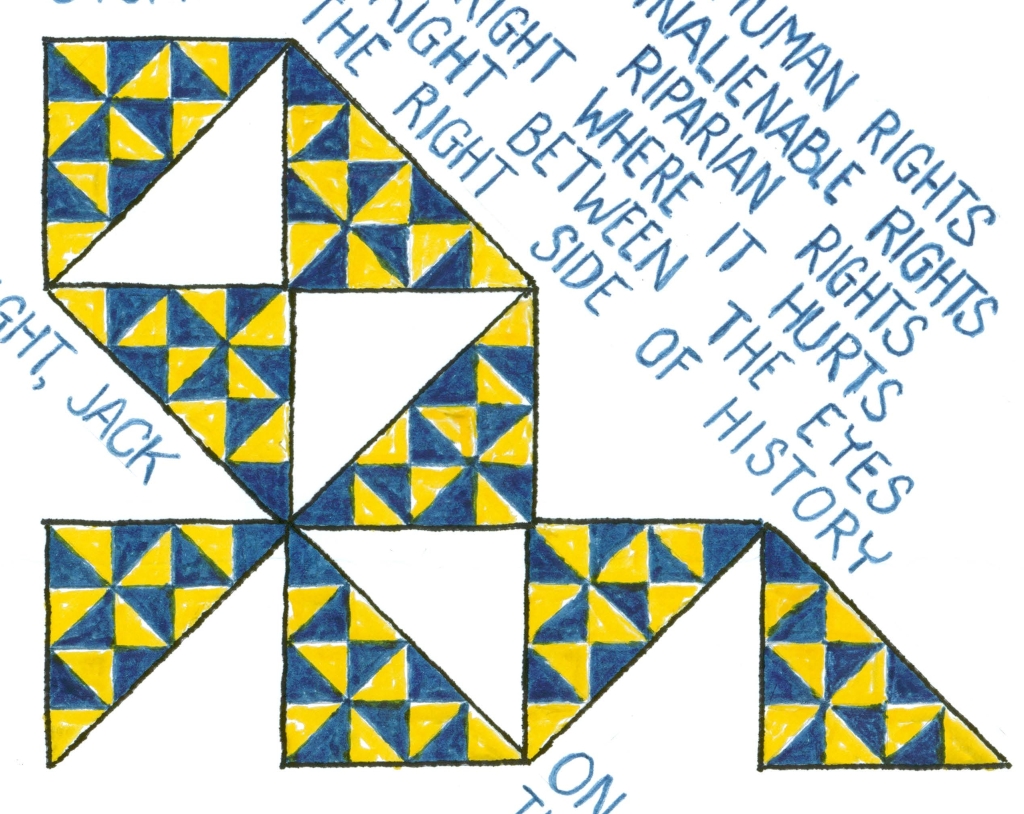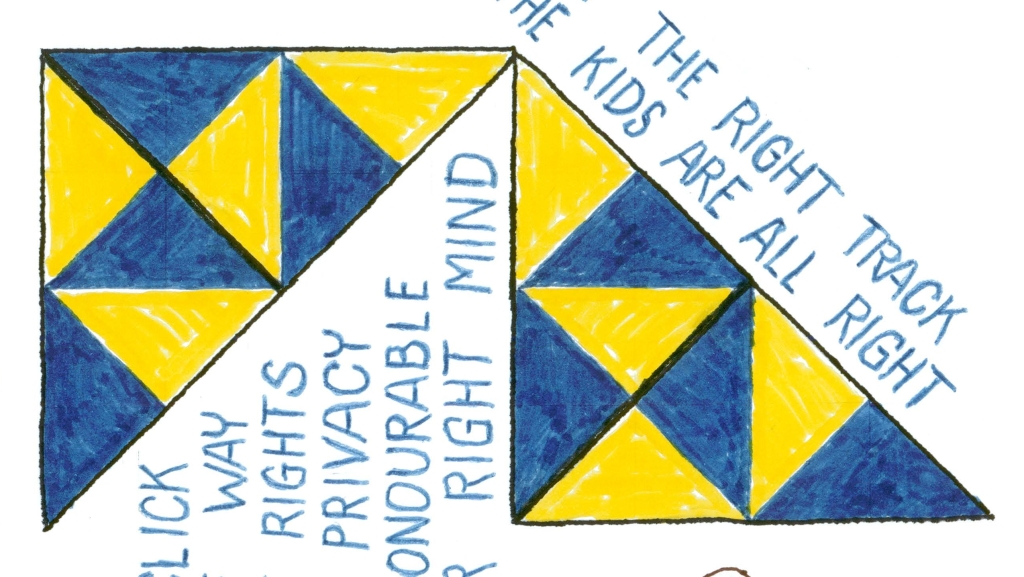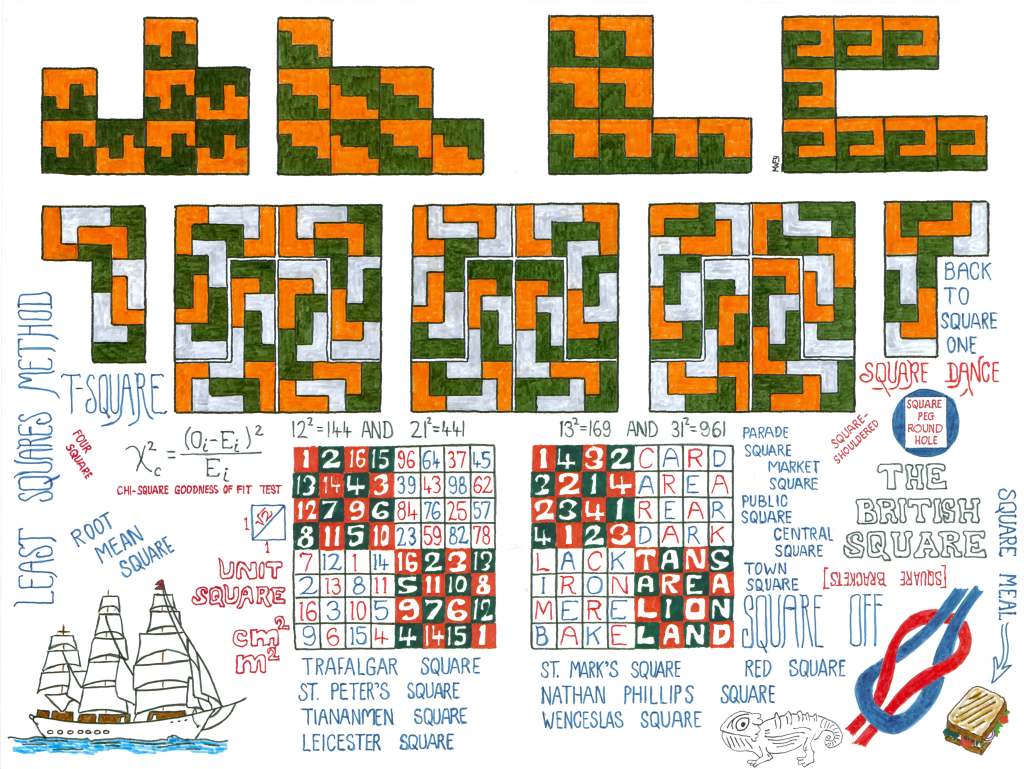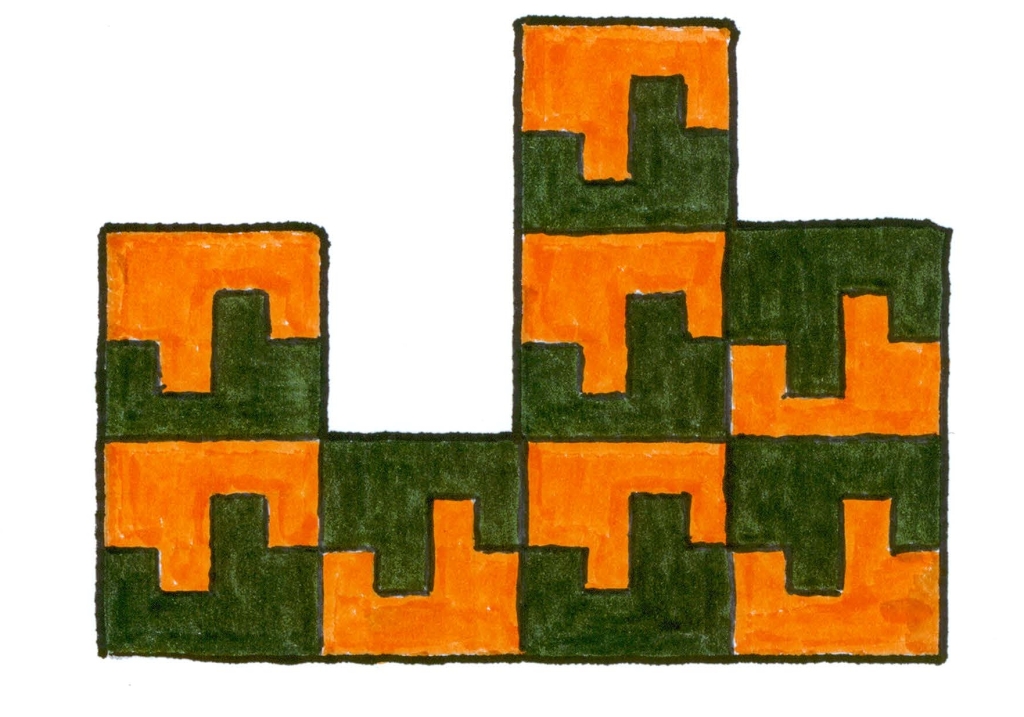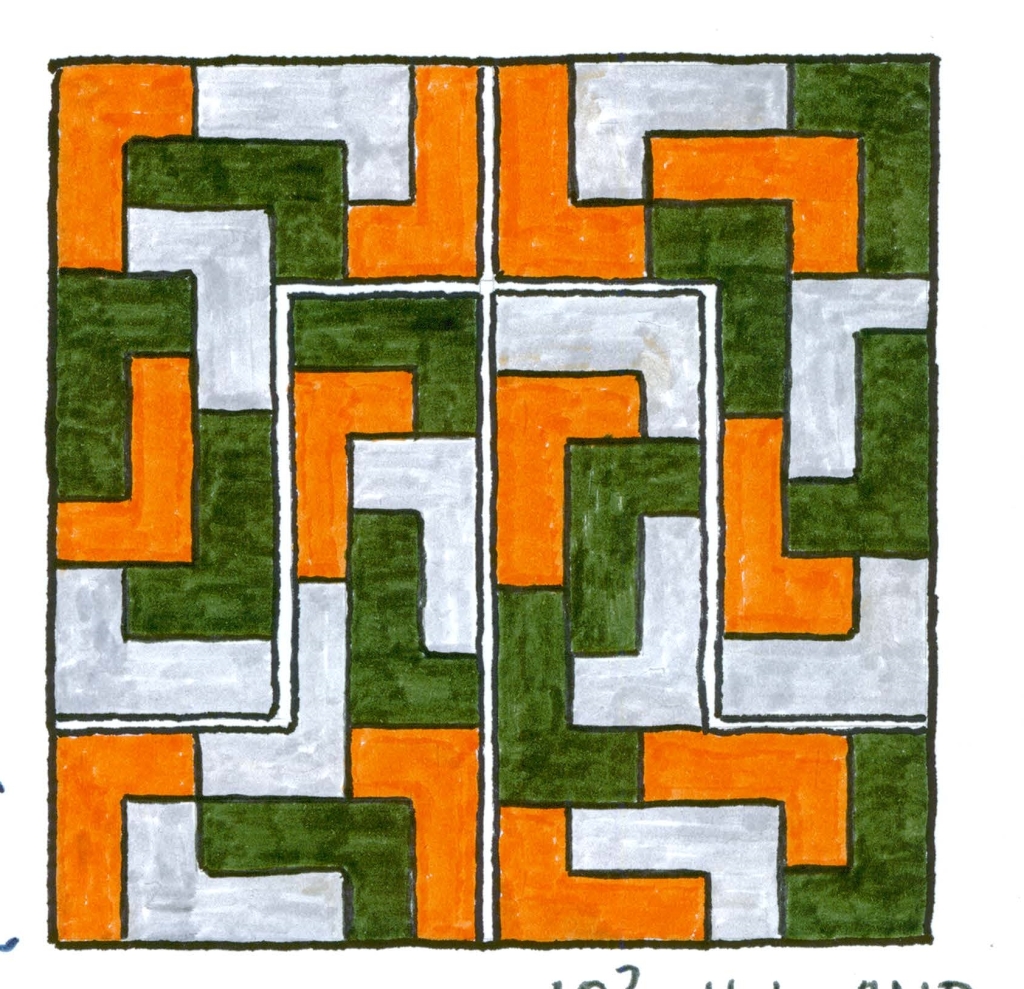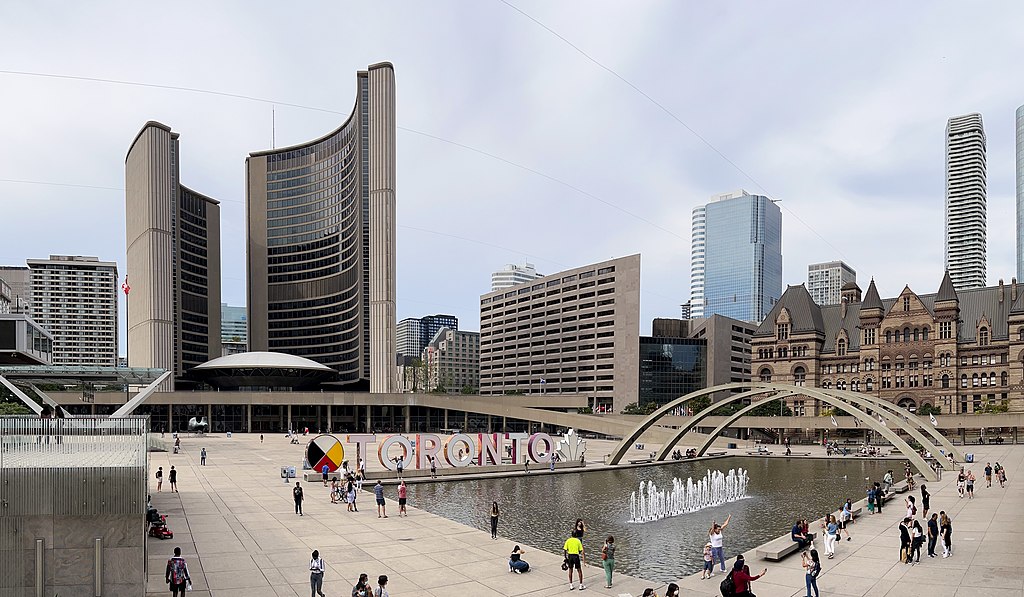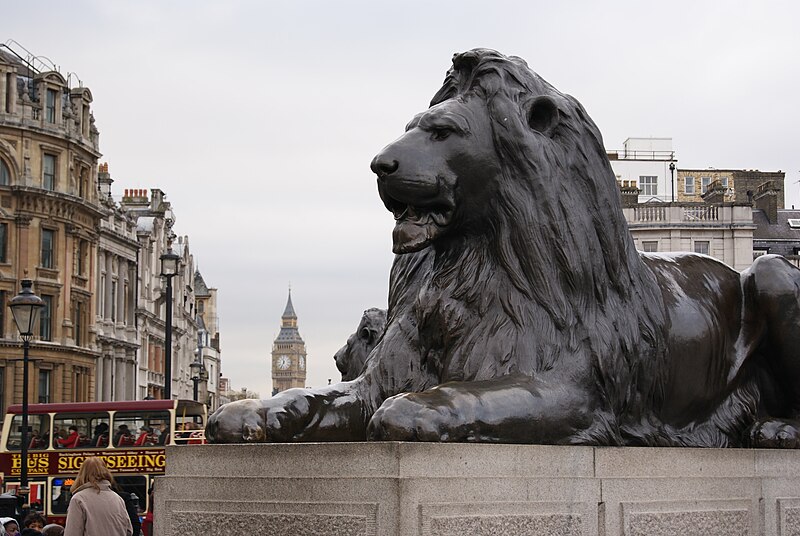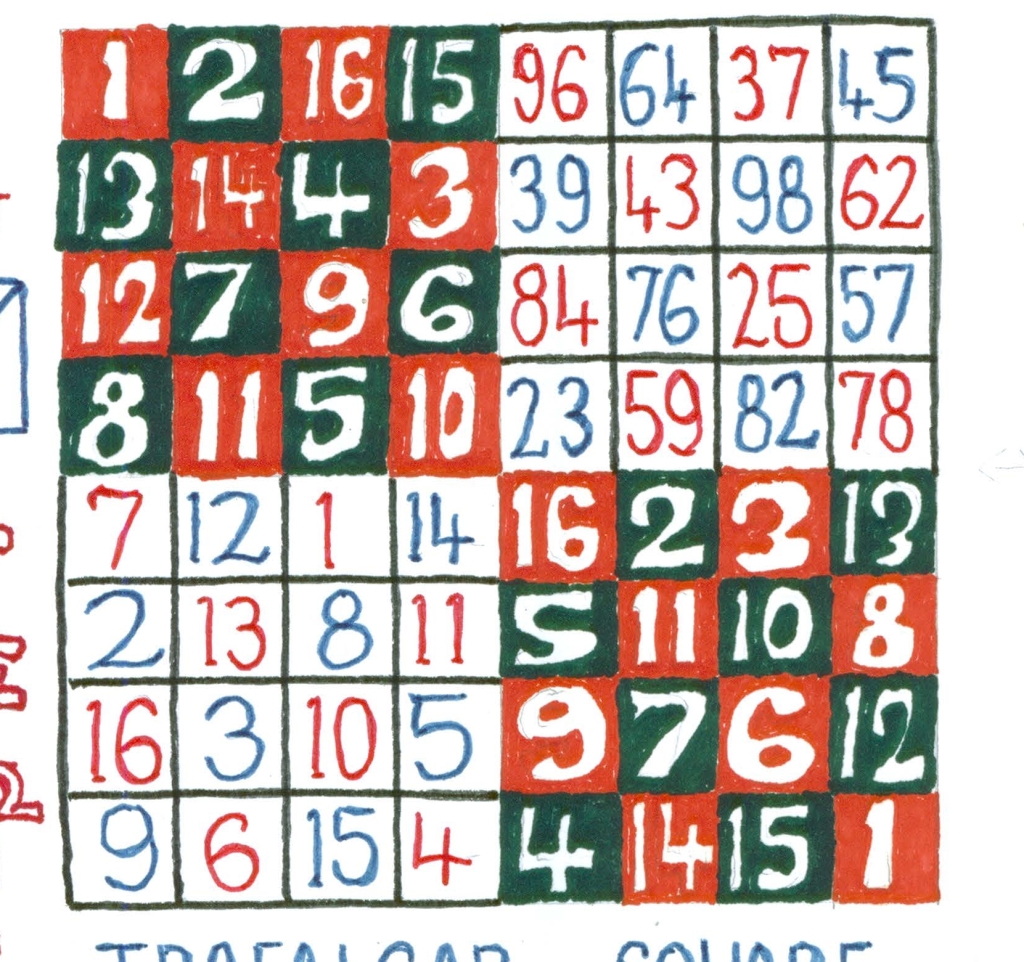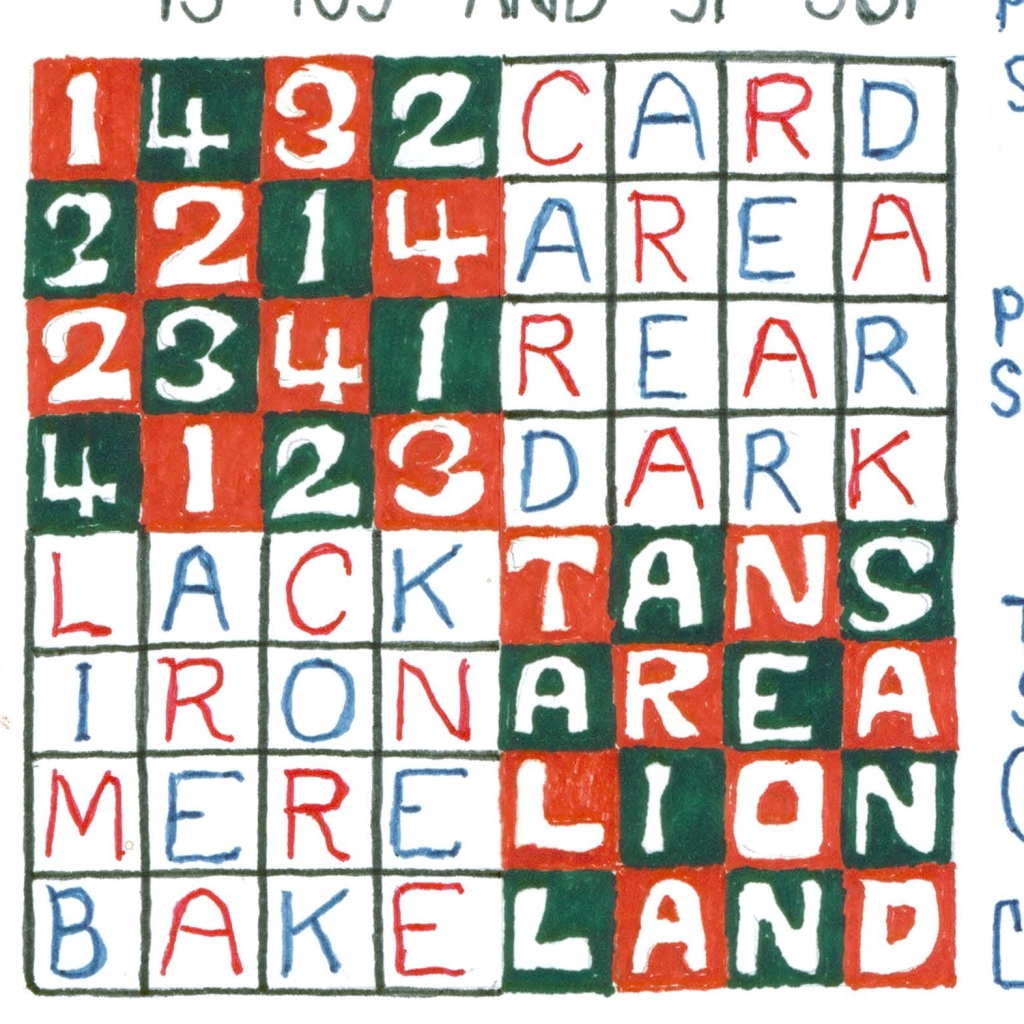This is the tenth in a series of posts exploring infinity, entities and ideas infinite, infinities larger than other infinities, infinity paradoxes, infinite perimeters, infinite regress and infinite sequences such as cyclic numbers.
Once again, this post features rep-tiles. A rep-tile (e.g. a square) is a shape which can be divided into smaller copies of itself, and all those smaller copies are the same size.

This first illustration features two varieties of rep-tile. The first variety can be seen in the upper left hand corner. A second copy of the same thing can be seen in the lower right hand corner as well:

This rep-tile is made up of nine squares but at the same time four of them can be positioned together to form a perfect square. Therefore this rep-tile is made up of thirty-six equal-sized smaller replications of itself, as pictured. In the upper right hand corner is a second variety of rep-tile, similar to but not the same as the first variety:

A second copy of this variety is also visible in the lower left hand corner. Like the first variety, this rep-tile is made up of nine squares and at the same time four of them can be positioned together to form a perfect square. Therefore this rep-tile, like the first variety, is made up of thirty-six equal-sized smaller replications of itself, as pictured.
There is also an interesting design in the centre:

Here we have four identical crosses. Each cross is divided up into geometric figures called pentominoes. A pentomino is a shape consisting of five connected squares. Five squares can be joined together in twelve different ways. Only nine of those twelve are used in each of these crosses. Before continuing you might want to see if you can figure out what the other three pentominoes are. Here is my illustration of pentominoes within pentominoes:

The twelve black shapes are the twelve different pentominoes. There are three giant pentominoes here forming a giant rectangle, and that rectangle is also divided up into the twelve pentominoes separated by white lines. Each of those twelve are divided into nine smaller pentominoes. Each of those nine are in turn divided into nine smaller pentominoes. The design at the bottom also consists of pentominoes. Here is another work made up of complex groupings of pentominoes:

In this next work I have shown how 12 pentominoes (five squares each) are equal in area to the cross (six squares):

Around the main central figure here is a white frame also made up of pentominoes (and blue circle arcs). Around the outside of that frame is a collection of smaller pentominoes. The panel at the bottom is a demonstration of how the twelve pentominoes can be arranged to form a rectangle in two different ways. In this next work there are brightly covered pentominoes surrounding a blue staircase. That staircase is composed of hexominoes (a hexomino is a shape made up of six squares):
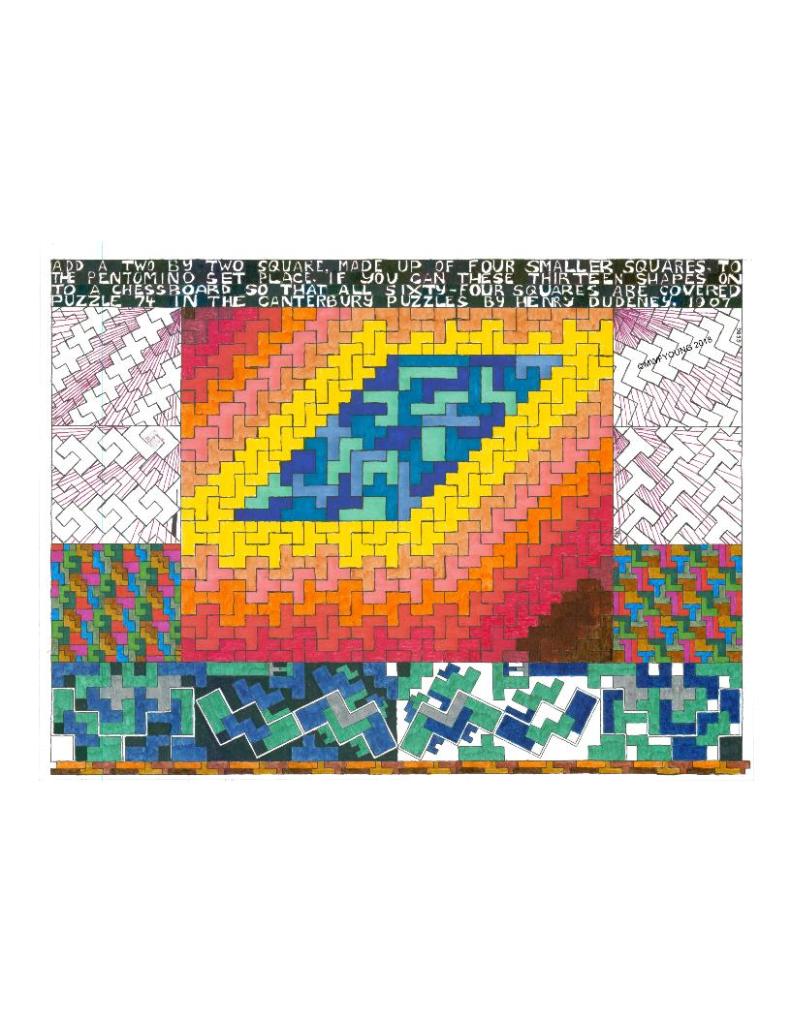
Finally, here is another cross made up of pentominoes and around the outside there are multi-coloured hexominoes.

Back to the rep-tiles, here we have one rep-tile in two different sizes and eight different colours:

This rep-tile is made up of nine squares again, basically a rectangle (two squares by four squares) plus a single ninth square projecting out on one side. Once again, four of these rep-tiles can be positioned to form a square. Therefore each rep-tile can be divided up into thirty-six (four times nine) smaller equal-sized rep-tiles identical to the large rep-tile. There is a large version of this on the left side comprised of sharp somewhat dark colours (except for the orange):

Two more smaller versions of this version can be found in the middle. The second version is made up of lighter colours (except for the blue) on the right side, also a large rep-tile consisting of thirty-six smaller rep-tiles:

Two slightly smaller duplicates of this second version can also be seen in the centre, for a total of four rep-tiles in the centre which form a large square:

Finally, here is what I think is the most striking of the rep-tile works discussed in this post. There are two different rep-tiles here:

On the upper left is the first rep-tile:

Each rep-tile here is made up of nine squares, and at the same time one can put four of these rep-tiles together to form a square. Therefore, again, this rep-tile can be divided up into thirty-six (four times nine) smaller equally-sized rep-tiles which are replications of the larger rep-tile. We have four rep-tiles on the upper left, two being black and red and two being white and red. This entire square is duplicated in the lower right. The second rep-tile can be seen on the upper right:

Once again this rep-tile is made up of nine squares, and again four of these rep-tiles can be positioned together to form a square. Therefore, again, this second rep-tile can be divided up into thirty-six smaller equally-sized rep-tiles identical in shape to the large rep-tile. On the upper right we see four rep-tiles, two made up of black and blue rep-tiles, and two made up of white and blue rep-tiles. All of this is duplicated on the lower left.
This is the last of the rep-tile posts but a series of posts on extraordinary irrep-tiles and infin-tiles is in the works for some later date.
Next Post: CYCLIC POWER
Post 1 – Infinity Everywhere – https://thekiddca.wordpress.com/2024/04/06/infinities-infinity-everywhere/
Post 2 – Snowflake Curve – https://thekiddca.wordpress.com/2024/04/13/infinities-2-theres-no-business-like-snow-business/
Post 3 – Ch’i Ch’iao T’u – https://thekiddca.wordpress.com/2024/04/20/infinities-3-infinitesimal-chi-chiao-tu/
Post 4 – Hotel Infinity – https://thekiddca.wordpress.com/2024/04/27/infinities-4-no-vacancies-but-rooms-still-available-at-hotel-infinity/
Post 5 – Pythagorean Infinity – https://thekiddca.wordpress.com/2024/05/04/infinities-5-pythagorean-infinity/
Post 6 – Rep-tiles 1 – https://thekiddca.wordpress.com/2024/05/12/infinities-6-welcome-to-the-rep-tile-house-part-1-of-5/
Post 7- Rep-tiles 2 – https://thekiddca.wordpress.com/2024/05/18/infinities-7-welcome-to-the-rep-tile-house-part-2-of-5/
Post 8 – Rep-tiles 3 – https://thekiddca.wordpress.com/2024/05/25/infinities-8-welcome-to-the-rep-tile-house-part-3-of-5/
Post 9 – Rep-tiles 4 – https://thekiddca.wordpress.com/2024/06/01/infinities-9-welcome-to-the-rep-tile-house-part-4-of-5/



